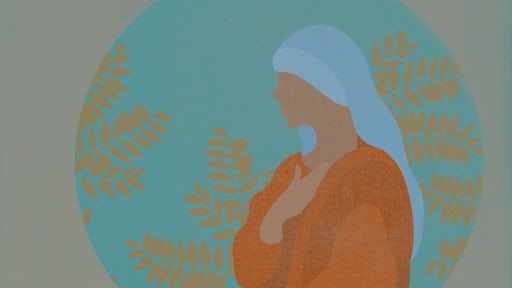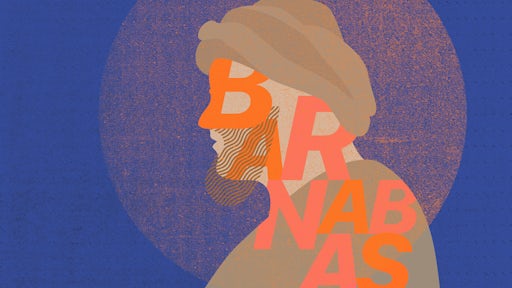For most of my life, it never crossed my mind how Jesus’ ministry was funded. But one day, all of that changed.
I was reading the book of Luke and came across three verses I had never seen before. In times past, I must have skimmed over them like a footnote before moving on to the real action. But this time was different. These verses stood out to me as if they were printed in bold. Luke 8:1-3 was my introduction to three unlikely Gospel Patrons:
“Soon afterwards he [Jesus] went on through cities and villages, proclaiming and bringing the good news of the kingdom of God. And the twelve were with him, and also some women who had been healed of evil spirits and infirmities: Mary, called Magdalene, from whom seven demons had gone out, and Joanna, the wife of Chuza, Herod’s household manager, and Susanna, and many others, who provided for them out of their means.”
Jesus’ ministry was funded by three women … with names! It wasn’t manna from heaven, water from the rock, or bread from the temple. God’s provision for his son came through real people, three hidden heroes of our faith. I was shocked.
We Are God’s Method
God the Father could have chosen to provide for his son in a number of ways.
1. God could have chosen for Jesus to be born into a wealthy family. Jesus might have been a trust-fund baby or the son of the son of a ruler. All of his needs for three years of ministry would have been taken care of. But that’s not what happened.
2. God could have commanded his son to miraculously multiply fishes and loaves every day for Jesus' and his disciples’ lunch. But that’s not what he did.
3. Jesus could have turned more Galilean tap water into wine and started the best winery in the Roman Empire. And that business as mission could have funded his proclamation of the gospel. But that’s not how the story goes.
4. Jesus also could have instructed his disciples to go fishing every morning and caused them to haul in such huge catches of fish that their nets would nearly break. I picture the disciples like the fishmongers at Seattle’s Pike’s Place Market, throwing and catching and selling fish to fund ministry. But that was not God’s plan.
5. Or Jesus could have had Peter go catch fish with coins in their mouths each day — one for Caesar, two for ministry, and on and on. But that’s not what Jesus did.
When God the Father wanted to provide for his son to preach the gospel, he called three women to step forward in faith and give generously. This is how God works. He raises up some to speak and others to send, some to go and others to give. Some are called to be preachers and many others are called to be patrons.
Do you see? We are God’s method. Our faith-filled generosity is the miracle.
But Who Were These Women?
Mary Magdalene
In Luke 8, we find that the distinguishing feature of Mary’s life was that Jesus delivered her from seven demons. Not one demon, not two, but seven. This implies significant brokenness in Mary’s life.
But Mary found freedom from her past and a whole new start when she encountered Jesus. She went on to support Jesus' ministry out of the overflow of her joy so that many others would meet Jesus too. Mary’s place of healing became her platform for ministry.
Joanna
Joanna is described as, “the wife of Chuza, Herod’s household manager.”
Herod’s household manager was a prominent position. It meant overseeing Herod’s property and revenue. Chuza was a high-ranking official and he and Joanna had wealth and influence. In our terms, they would have lived on top of the hill, flown first class, and socialized with celebrities.
But along the way, Joanna’s life was interrupted by a strange sickness. She and Chuza likely did what any person of means would do, they sought out the best doctors. When that didn’t work they probably got a second opinion. But that too ended in hopelessness.
Just when Joanna had nowhere else to turn, unusual news started swirling about a Galilean preacher and healer. He preached outdoors to huge crowds and was loved by common people. Some said he was a glutton and a drunkard, the friend of tax collectors and sinners. Others praised him for healing the sick and even raising the dead.
Jesus and his followers were certainly beneath Joanna’s social position, but what other option did she have?
If Jesus could truly heal, wouldn’t it be worth it to go to him? Like Mary Magdalene, Joanna found her way to Jesus and was powerfully healed. The Herodian nobles must have partied that day, but afterwards, Joanna did something unusual. She didn’t simply admire Jesus from afar or start going to synagogue more often. Joanna became one of Jesus’ disciples. She followed his teaching and even joined his ministry trips as one of those, “who provided for them out of their means.” (Luke 8:3)
Susanna
Susanna is the least known of the three women. This one verse is the only time she gets mentioned. Like many of history’s great Gospel Patrons, Susanna remains hidden, her life best summarized by the bigger story she was a part of.
Partners To The End
If we follow these women throughout the gospel of Luke, we find that they didn’t just give a gift and disappear. Instead, we find them present at Jesus’ hour of crucifixion. When all the other disciples had fled, “the women who had followed him from Galilee stood at a distance watching these things.” (Luke 23:49)
At Jesus’ burial, the women again “followed and saw the tomb and how his body was laid. Then they returned and prepared spices and ointments.” (Luke 23:55-56) Even in his death, these women were still giving to Jesus.
Then, “on the first day of the week, at early dawn, they went to the tomb.” (Luke 24:1) Mary Magdalene and Joanna were eye-witnesses to the empty tomb. (Luke 24:10) Finally, it was Mary, from whom seven demons had gone out, who was the first person to see the risen Lord. (John 20:14)
After Jesus conquered Satan, sin, death, and hell, the first people he wanted to see were his Gospel Patrons.




